#north american wildlife
Text

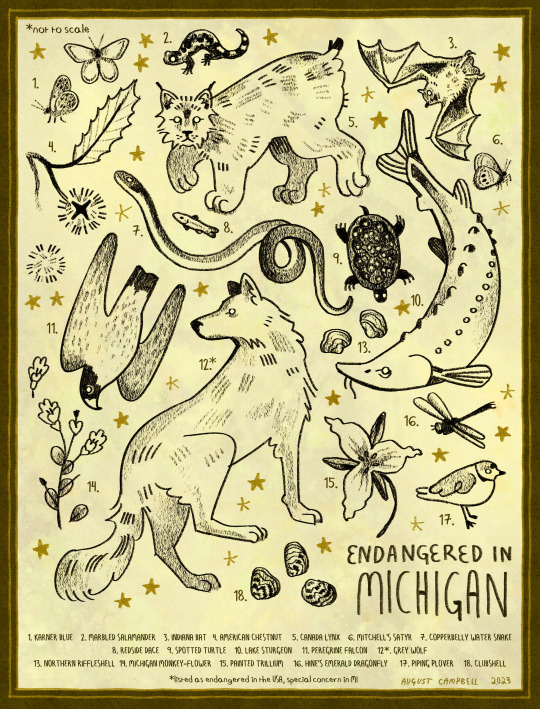
ENDANGERED IN MICHIGAN [redraw]
1. karner blue 2. marbled salamander 3. indiana bat 4. american chestnut 5. canada lynx 6. mitchell's satyr 7. redside dace 8. copperbelly water snake 9. spotted turtle 10. lake sturgeon 11. peregrine falcon 12*. grey wolf 13. northern riffleshell 14. michigan monkey-flower 15. painted trillium 16. hine's emerald dragonfly 17. piping plover 18. clubshell
*listed as endangered in the USA, special concern in MI
#my art#art#endangered species#michigan flora#michigan fauna#michigan wildlife#biology art#conservation#north american wildlife
2K notes
·
View notes
Text
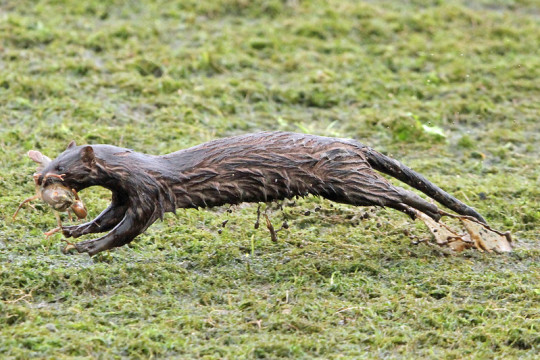
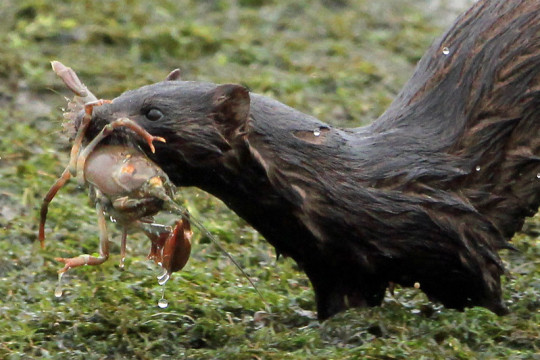
American mink (Neogale vison) with a crayfish
Photos [1, 2] © Critter Cam
1K notes
·
View notes
Text
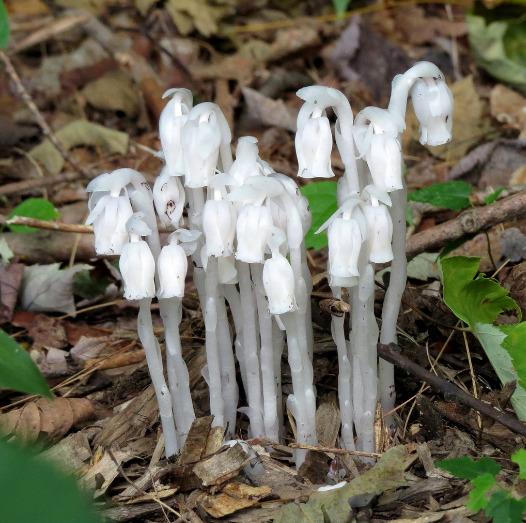
Ghost Plant (Monotropa uniflora)
Family: Heath Family (Ericaceae)
IUCN Conservation Status: Unassessed
Over 80% of plants form mutualistic relationships with soil-dwelling fungi, linking their roots to the fungus' hyphae and providing photosynthetically produced sugars in exchange for hard-to-access nutrients that the fungus takes in from the soil. The Ghost Plant, which is found mainly in temperate shady forests across much of Asia and the Americas, also connects its roots with the hyphae of fungi (specifically members of the family Russulaceae,) but contributes nothing; it is a parasite, stealing nutrients not only from its host fungus but also from other plants (particularly birches) that its host is also connected to. Living entirely on stolen nutrients means that Ghost Plants have no need to carry out photosynthesis, and as such they lack the green pigment chlorophyll that almost all plants use to absorb sunlight, giving them their namesake eerie white appearance (although on occasion pale pink individuals are recorded) and allowing them to survive in dark, shady conditions that other plants are unable to colonise. Ghost Plants bloom rarely and unpredictably (as they do not photosynthesise they have no need for aboveground leaves or stems when not reproducing, but apparently develop stems and flowers rapidly during periods of wet weather following prolonged dry conditions,) baring a single bell-shaped white flower with a black-and-yellow interior that attracts various species of bees and flies. Following pollination the plant's tiny seeds are forced through gaps in its petals and carried away on the wind, remaining dormant in the soil they settle on until they detect a suitable host fungus growing nearby.
——————————————————————————
Image Source: https://www.inaturalist.org/taxa/49477-Monotropa-uniflora
#Happy Halloween!#Ghost Plant#ghost plant#botany#biology#plant#plants#wildlife#Asian Wildlife#North American Wildlife#parasitic plants#parasitic plant#angiosperms#flowering plants
266 notes
·
View notes
Text
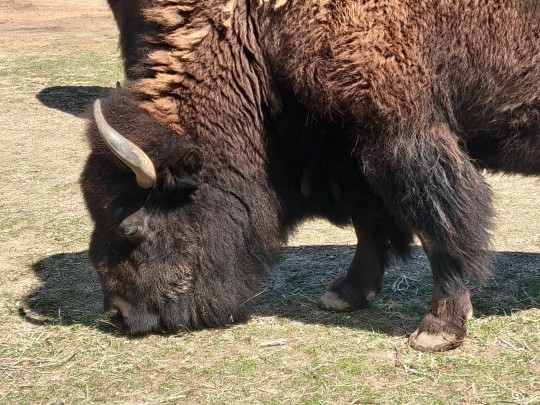
American bison (Bison bison)
#can you guys tell bison are my fave animal#mine#bison#hoofstock#animals#wildlife#prairie#buffalo#american bison#nature#naturalist#nature photography#photography#mammals#ecology#north america#north american wildlife#conservation#ecologist#biologist#wildlife biology#wildlife biologist#biology#national parks#badlands#badlands national park#national park
84 notes
·
View notes
Text
For #NationalFerretDay :
Black-Footed Ferret (now Mustela nigripes) by John Woodhouse Audubon:

1. oil on canvas, 1840/46
National Gallery of Art DC

2. Plate XCIII from The Viviparous Quadrupeds of North America, hand colored lithograph, 1845-48
NYPL The New York Public Library
#animals in art#animal holiday#19th century art#illustration#natural history art#scientific illustration#ferret#Black-Footed Ferret#North American wildlife#The Viviparous Quadrupeds of North America#John Woodhouse Audubon#painting#oil painting#lithograph#book plate#National Gallery of Art DC#NYPL#mammalogy#mammals#National Ferret Day
11 notes
·
View notes
Text

Not a rodent, but bats are called fledermaus in German, which translates to "flying mouse," and I don't have another blog where this might fit, so call it close enough?
This female pallid bat is being examined by a licensed professional for scientific purposes, adhering to strict standards to prevent stress, injury, and zoonosis. She looks scary but the open mouth and bared teeth were all for show. She was actually pretty chill and cooperative during her exam.
She was released shortly after this photo was taken.
20 notes
·
View notes
Text

Vancouver Island Marmot
critically endangered marmot species. Marmots are large ground squirrels and include the common species known as the groundhog or whistlepig. Marmots live throughout Asia, Europe, and North America. The Vancouver Island Marmot is one of the only endemic species to Canada and is critically endangered.
The Vancouver Island Marmot population dropped as low as 25 at one point, but due to the efforts of conservationists, there are now about 300 in the wild and more are being bred in captivity. This large rodent won't breed until 3-4 years of age and can live 10 years in the wild and 14 in captivity.

Sources: [x, x]
10 notes
·
View notes
Text

14 notes
·
View notes
Text

Bobcat
22 notes
·
View notes
Photo
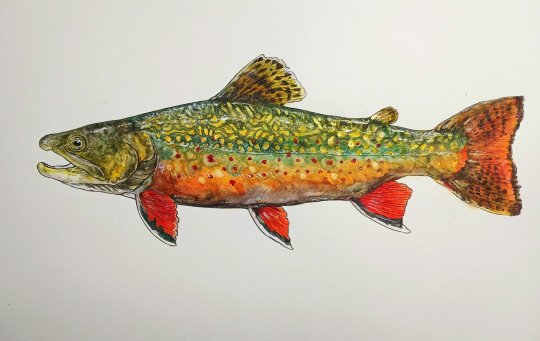
Another painting based off the original drawing I did last year or the year before. This one is bigger and now it’s done. Just gotta frame it.
Water color, the gold is from Beam Paints. Indigenous owned, plastic free, all naturally produced pigment. And it’s great, the color is so rich.
I plan to do the companion to this one which I also have blown up to this size, with their paint. 10/10 would recommend.
#brook trout#fish#trout#salmon#watercolor#painting#Natural History illustration#natsci#natural science#sciart#scientific illustration#North American Fish#North American Wildlife#original painting
62 notes
·
View notes
Text

#whitetail deer#white tailed deer#whitetailed deer#north american wildlife#Minnesota#deer#deerposting#OKWildlifeDepartment
15 notes
·
View notes
Text
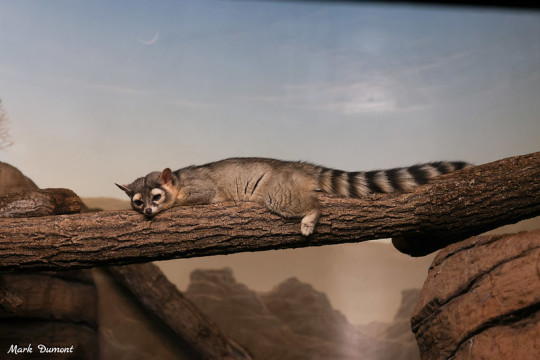
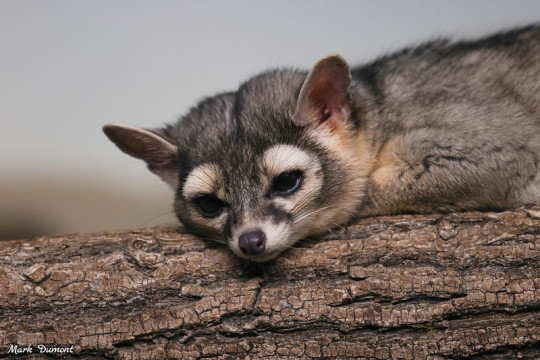
Ringtail (Bassariscus astutus)
Photos by Mark Dumont
1K notes
·
View notes
Text

Louisiana Pine Snake (Pituophis ruthveni)
Family: Colubrid Snake Family (Colubridae)
IUCN Conservation Status: Endangered
Among North America's rarest snakes, the Louisiana Pine Snake's small population size is the result of its highly specific habitat requirements and the resulting sensitivity to human-driven habitat changes that comes with them; members of this species feed primarily on Baird's Pocket Gophers (a specific species of burrowing rodent,) and almost always live in abandoned Baird's Pocket Gopher burrows (often after having eaten the burrows creator,) and as such in areas where Baird's Pocket Gophers are not present Lousiana Pine Snakes cannot survive. Native to western Lousiana and eastern Texas, members of this species do best in pine forests (particularly those dominated by a specific species of pine, Pinus palustris, forests of which are noted to generally support high levels of biodiversity as a result of the loose canopies they form which allow many smaller species of plants to coexist with them,) and spend most of their lives underground, rarely travelling far from their stolen burrows. They emerge from their burrows mainly during the mid-day to hunt (targeting rabbits, frogs and other rodents when Baird's Pocket Gophers are scarce,) but otherwise remain concealed underground in order to avoid predation and unusually high or low temperatures; during the winter, when the weather becomes colder and prey becomes scarcer, they travel deeper into a Baird's Pocket Gopher burrow and hibernate until the early spring.
--------------------------------------------------------------------------
Image Source: https://www.inaturalist.org/taxa/29041-Pituophis-ruthveni
#Louisiana pine snake#snake#snakes#reptile#reptiles#zoology#biology#herpetology#animal#animals#herpetofauna#squamata#squamate#squamates#wildlife#North American wildlife#North American snakes
182 notes
·
View notes
Text
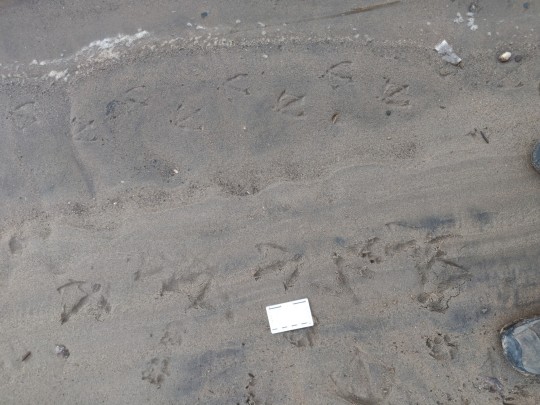
Comparison between mallard (top) and Canada goose (bottom) tracks.
#nature#wildlife#nature photography#naturalist#mine#photography#ecology#north america#animals#wildlife biology#ornithology#birding#birds#bird#bird watching#bird watcher#biologist#ecologist#tracks#animal tracks#ducks#geese#canada goose#mallard#mallards#canada geese#wildlife biologist#original photographers#original photography#north american wildlife
81 notes
·
View notes
Text
#BookRecommendation for #InternationalBeaverDay :
Beaverland: How One Weird Rodent Made America

#animals in art#animal holiday#book recommendation#Amazon Associates#beaver#beavers#North American wildlife#International Beaver Day
7 notes
·
View notes
Text


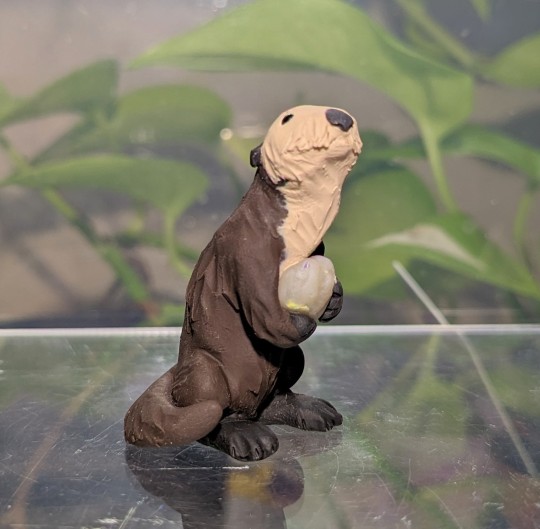
Today's little mustelid friend, the Sea Otter! He's holding a little shell with irredescent bits in it. The other half of Anime North's otters, I tried to make both look different from each other, and more like the species they're based on.
Both are cute though! Hard to go wrong with otters. :)
If you'd like an otter friend for yourself, come peep at Bittythings and Beasts.
#otter#sea otter#mustelids#animals#wildlife#north american wildlife#canadian wildlife#polymerclay miniatures#polymer clay#anime north 2023#kawaii artist#kawaii art
17 notes
·
View notes